
Cote D Azur is also known as the French Riveria that stretches from St Tropez to Monaco featuring many playgrounds for the rich and famous. It also has been home to me for five and half years during the formative years of my chef career cooking on one of the Supersize Yachts that we hopefully get to see here in Singapore when the Integrated Resorts are completed. Many of the world's superyachts often ply the riveria during summer and this is where i had the chance to explore the markets in the different cities and we call into the ports. This time round, rather I had the chance to explore them at my own sweet time with my wife N, instead of rushing from one stall to another before hopping back to my gallet to prepare breakfast for the yacht owners and their guests.
Marche Forville, Cannes

Located near the Palais De Festivals which is the annual hosting venue of the Cannes Film Festival annually. Marche Forville is a battered stucco structure with a roof and a few arches but no sides. Every morning except Monday, it usually functions as the fruit and vegetable market that supplies raw materials to the dozens of restaurants near the old port of Cannes as well as the luxurious private yachts at the nearby Port Canto. The excitement starts around 7am in the morning but no shouting and hard selling.


Many vendors have their own little niche of regular customers and are already busy processing orders that have also been sent in by restaurants and yachts. The range of products here is enormous and many individual stalls stand out on their own. Winter season produce like cabbages, kale, chards, fennel bulbs and potatoes are the main highlights at this time of the year. Citrus fruits like lemons, clementines and oranges were in season though there were also other imported items from warmer climate countries. We sampled commercial strawberries from Spain and artisanal grown ones from Portugal with big differences in appearance and flavour intensity. While the commercial ones look big and tempting with vibrant colour that comes with extra sourness, the smaller Portuguese lighter but more uniformly coloured ones were more flavourful with natural sweetness and strawberry aromas.
 Besides the huge fruit, vegetables and flowers selection, there are also stalls selling artisan cheeses made from farms in the Provence regions, air dried salamis and saucissons from Alps Maritime. Most of these artisan cheeses are not available in commercial suoermarkets as the volume produced are limited. They represent the art of fine cheese making with traditionals skills and techniques driven by passion pass down from many different generations. Made from goats, cows or ewes milk, the cheeses are also flavoured with Provencal herbs like rosemary, thyme and bay leaves. From soft creamy textured cheese to those hard ripened chunks exploding with nutty, sharp and pungent flavours, there is something for everyone to enjoy with their baguettes. Cheese to the French is like tofu to the Chinese and is traditional accompaniment to their wines after dinner.
Besides the huge fruit, vegetables and flowers selection, there are also stalls selling artisan cheeses made from farms in the Provence regions, air dried salamis and saucissons from Alps Maritime. Most of these artisan cheeses are not available in commercial suoermarkets as the volume produced are limited. They represent the art of fine cheese making with traditionals skills and techniques driven by passion pass down from many different generations. Made from goats, cows or ewes milk, the cheeses are also flavoured with Provencal herbs like rosemary, thyme and bay leaves. From soft creamy textured cheese to those hard ripened chunks exploding with nutty, sharp and pungent flavours, there is something for everyone to enjoy with their baguettes. Cheese to the French is like tofu to the Chinese and is traditional accompaniment to their wines after dinner. Ironically much as France is one country with the largest variety of cheese, you can hardly find such a thing as a cheesecake in the patisseries. The French are very traditions oriented when it comes to their cheeses and they celebrate the efforts of their cheesemakers hardwork by respecting the way it should be appreciated, unadulterated in their natural form. Many of these cheeses are created based on traditional skills passed down from generations and usually come with a story to tell. Personally I preferred nutty flavoured semi hard cheese with a slight acidity though there many creamy soft ones like brie and salut which are heaven for me when eaten with fig jam or red berries confitures.
Ironically much as France is one country with the largest variety of cheese, you can hardly find such a thing as a cheesecake in the patisseries. The French are very traditions oriented when it comes to their cheeses and they celebrate the efforts of their cheesemakers hardwork by respecting the way it should be appreciated, unadulterated in their natural form. Many of these cheeses are created based on traditional skills passed down from generations and usually come with a story to tell. Personally I preferred nutty flavoured semi hard cheese with a slight acidity though there many creamy soft ones like brie and salut which are heaven for me when eaten with fig jam or red berries confitures.  The cool and dry winter air from the Alps provide an ideal environment to practise the art of saucisson making. These air cured sausages are an important ingredient in French cooking, lending flavour dimensions to soups and stews, served on charcuterie platters and stuffed into baguettes sandwiches. Made with different cuts of meats or butcher trimmings, they represent the art of meat preservation in French culinary history way before the refrigerator was invented. Unlike Spanish or Italian sausages that tend to be more infused with North African spices, Provencal type sausages are flavoured with local herbs and sometimes encrusted by them too. The air dried meats are full of "terroir" dimensions coming from what the animals feed on from the enviroment and the cold mountain air that dries up and concentrates the flavour of the meats after curing. The saltiness of these air dried meats are often balance by pairing them with a sweet fruit like melons or figs when they are served au natural while the sides and trimings are often used for cooking.
The cool and dry winter air from the Alps provide an ideal environment to practise the art of saucisson making. These air cured sausages are an important ingredient in French cooking, lending flavour dimensions to soups and stews, served on charcuterie platters and stuffed into baguettes sandwiches. Made with different cuts of meats or butcher trimmings, they represent the art of meat preservation in French culinary history way before the refrigerator was invented. Unlike Spanish or Italian sausages that tend to be more infused with North African spices, Provencal type sausages are flavoured with local herbs and sometimes encrusted by them too. The air dried meats are full of "terroir" dimensions coming from what the animals feed on from the enviroment and the cold mountain air that dries up and concentrates the flavour of the meats after curing. The saltiness of these air dried meats are often balance by pairing them with a sweet fruit like melons or figs when they are served au natural while the sides and trimings are often used for cooking.  Besides sausage and air dried meats, another favourite item that the French love from their markets is homemade pate or pate du maison. Its a softer finer blend of meat mixed with nuts, foie gras or truffles encrusted in a pie pastry and baked. The pates are then chilled and serve cold with salads and are sometimes used to as a spread for their breads. Just like cheesemaking, making sausages and air dried ham are also an artisanal art for the butchers and represent a signfication part of French culinary traditions.
Besides sausage and air dried meats, another favourite item that the French love from their markets is homemade pate or pate du maison. Its a softer finer blend of meat mixed with nuts, foie gras or truffles encrusted in a pie pastry and baked. The pates are then chilled and serve cold with salads and are sometimes used to as a spread for their breads. Just like cheesemaking, making sausages and air dried ham are also an artisanal art for the butchers and represent a signfication part of French culinary traditions. Funghi lovers will be thrilled that despite being only one mushroom stall around, it has a wide variety of wild and dried mushrooms. Fresh morels, truffles, chanterelles, bolotus, cepes and portobellos are some of the variety that can be found here in different seasons. Its interesting to see an entire stall sell an interesting whole range of edible fungus both grown above and below the ground. Yes, truffles are in season though they were also coming to end by this time of the year. French soil only produces black truffles from the regions of Perigord. There were fresh chanterelles, yellow mushrooms and black trumpet mushrooms on sale too. Unfortunately due to their high perishable nature, otherwise I would have loved to take some home too.


Another interesting find here are certain varieties of rare fresh herbs like lemon verbena, pineapple sage and purple basil leaves. A wide range of locally made infused oils and vinegars can also be found here. Different kinds of Mediterranean antipastos like semi dried tomatoes, pickled olives, marinated grilled vegetables adds an impressive visual sight.Some exotic fruits that are found here are wild tiny strawberries, mulberries and prickly pears. Nearby Marche Forville on one of it sides facing the port, Paul's, a croissanterie and boulangerie bakes some of the best artisan breads and croissants that I have tasted in the world.
Marche Port Antibes, Antibes

Antibes is a sleepy old Mediterranean town by the sea across the Baie Des Anges (Bay of Angels) from Nice,France. In late spring and early summer, this little place becomes alive with its little harbour filled with fishing boats. More importantly, pleasure yachts belonging to some of the well known rich and famous people, gather here to pick up their guests as well as to do provisioning for their summer cruise season. During my time as Executive Sous Chef onboard Lady Moura (above right), this was one of my favourite ports of call as it was also an English widely spoken French town.
Marche Port Antibes is a smaller version of Marche Forville but being situated in the heart of an old town with no modern architecture in sight, a trip to the market often creates a nostalgic feeling like walking back in history. Cafes and boulangeries in and nearby the market provide a whiff of aromatically brewed coffees and freshly baked French pastries.
 At the entrance to the market, rotisserie shops display racks of succulent tender roasted chickens, stuffed pork loins with prunes, baby short ribs and home made potato crisps. The aromas of roasting chickens, freshly baked pastries from nearby patisseries and boulangeries (bakeries) and French accordion music from street buskers create a village feeling as we soaked up the best of a rustic sleepy old French town off its peak from the hustle and bustle of the summer and autumn seasons.
At the entrance to the market, rotisserie shops display racks of succulent tender roasted chickens, stuffed pork loins with prunes, baby short ribs and home made potato crisps. The aromas of roasting chickens, freshly baked pastries from nearby patisseries and boulangeries (bakeries) and French accordion music from street buskers create a village feeling as we soaked up the best of a rustic sleepy old French town off its peak from the hustle and bustle of the summer and autumn seasons.

Antibes is a sleepy old Mediterranean town by the sea across the Baie Des Anges (Bay of Angels) from Nice,France. In late spring and early summer, this little place becomes alive with its little harbour filled with fishing boats. More importantly, pleasure yachts belonging to some of the well known rich and famous people, gather here to pick up their guests as well as to do provisioning for their summer cruise season. During my time as Executive Sous Chef onboard Lady Moura (above right), this was one of my favourite ports of call as it was also an English widely spoken French town.
Marche Port Antibes is a smaller version of Marche Forville but being situated in the heart of an old town with no modern architecture in sight, a trip to the market often creates a nostalgic feeling like walking back in history. Cafes and boulangeries in and nearby the market provide a whiff of aromatically brewed coffees and freshly baked French pastries.
 At the entrance to the market, rotisserie shops display racks of succulent tender roasted chickens, stuffed pork loins with prunes, baby short ribs and home made potato crisps. The aromas of roasting chickens, freshly baked pastries from nearby patisseries and boulangeries (bakeries) and French accordion music from street buskers create a village feeling as we soaked up the best of a rustic sleepy old French town off its peak from the hustle and bustle of the summer and autumn seasons.
At the entrance to the market, rotisserie shops display racks of succulent tender roasted chickens, stuffed pork loins with prunes, baby short ribs and home made potato crisps. The aromas of roasting chickens, freshly baked pastries from nearby patisseries and boulangeries (bakeries) and French accordion music from street buskers create a village feeling as we soaked up the best of a rustic sleepy old French town off its peak from the hustle and bustle of the summer and autumn seasons.Walking through the market was a visual and inspiring treat for the senses as u see rows of local produce from marinated olives, artisanal cheeses, sausages, infused oils, spices, fresh herbs and home made pates. Being non locals, the stall owners were not only friendly to us, they also invited us to sample some of their produce on display.
In the market, besides the regular fruit and vegetable selections, the most significant sight is to see local fishermen selling their daily catch. With coastal weather permiting, the boats come in daily up to the old port with their catch from the Mediterranean where most of the time, the seafood ends up in the kitchens of local restaurants as many of the chefs have already established their contacts with the fishermen. Some of the freshest seafood that I have found here are line caught Mediterranean seabass, black and red Dorado(sea bream), monkfish, tuna, swordfish ,sea urchins(seasonal), octopus, calamari (squid) and divers scallops. Oysters and mussels were in season with many being snapped up by shoppers and local restaurants as soon the crates were opened.


Marche aux Fleurs, Old Town,Nice
Though fruit and vegetables are only part of its theme, its dominance is the huge selections of flowers grown by the farmers in the local Rivera region and the Alps Maritimes. Situated on cours Saleya, located behind the Vielle Ville, the Old Town. These florists here are not only keen just to sell their flowers to you, but are also happily willing to conduct the serious business of adorning the interiors of homes and businesses with bouquets.
Nice is home to the Nicoise olives grown in the surrounding regions which lends its name to a significant Provencal dish, Salad Nicoise. The aolives are harvested, cured and marinated before being sold as snacks or used in cooking.Another worthy note its that are a few stalls here that sell wonderfully home made jams, marmalades, boiled sweets (bons bons) and candies. 





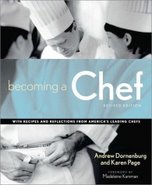
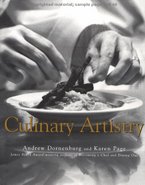


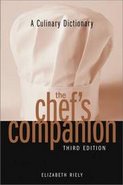

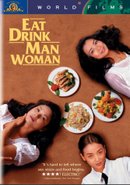
.jpg)



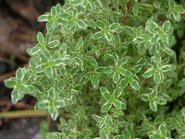


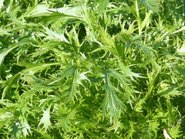
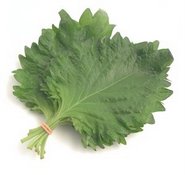

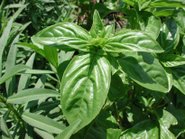
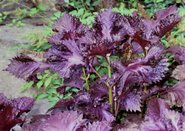
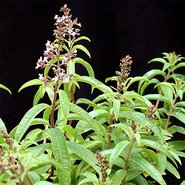
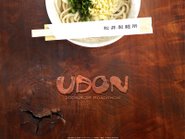


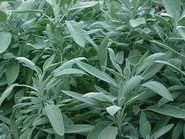
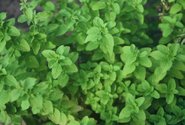

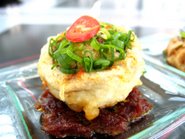


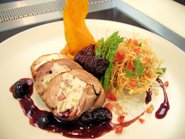
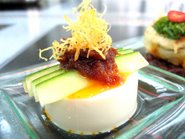
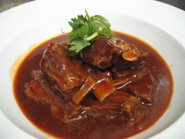
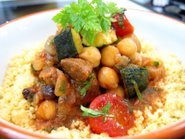


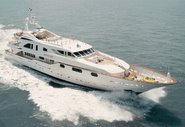
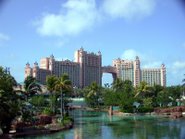



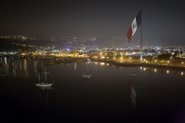
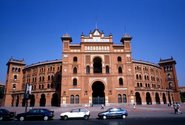

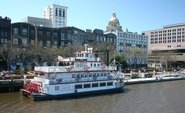
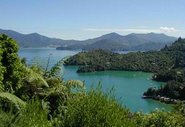
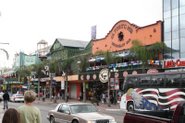


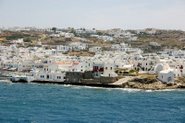
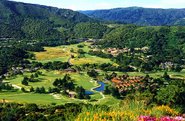



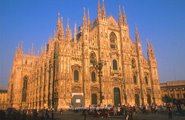

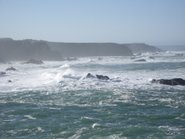

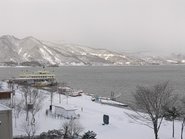




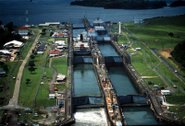


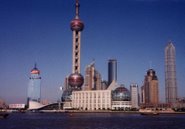
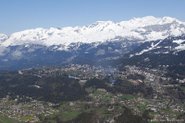
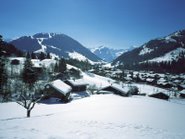

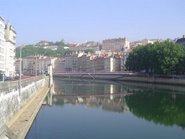
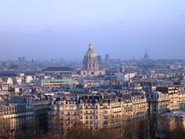
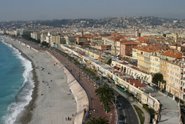
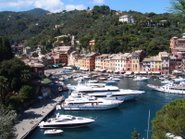
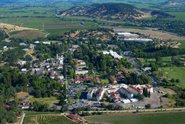
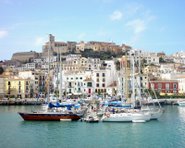
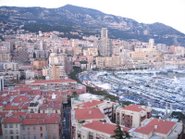


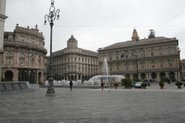



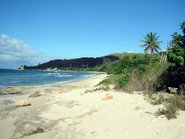
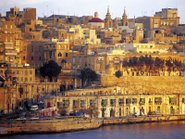



1 comment:
what you posted in yr is very interesting and educational
Post a Comment